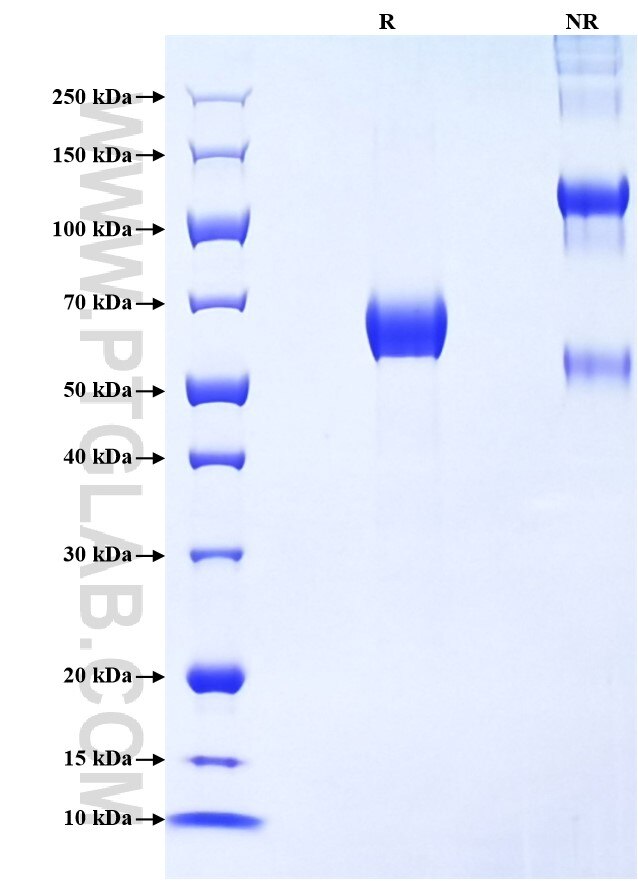Recombinant Human EMR2 protein (rFc Tag)
Species
Human
Purity
>90 %, SDS-PAGE
Tag
rFc Tag
Activity
not tested
Cat no : Eg2479
Validation Data Gallery
Product Information
| Purity | >90 %, SDS-PAGE |
| Endotoxin | <0.1 EU/μg protein, LAL method |
| Activity |
Not tested |
| Expression | HEK293-derived Human EMR2 protein Gln24-Glu260 (Accession# Q9UHX3-1) with a rabbit IgG Fc tag at the C-terminus. |
| GeneID | 30817 |
| Accession | Q9UHX3-1 |
| PredictedSize | 51.4 kDa |
| SDS-PAGE | 60-70 kDa, reducing (R) conditions |
| Formulation | Lyophilized from 0.22 μm filtered solution in PBS, pH 7.4. Normally 5% trehalose and 5% mannitol are added as protectants before lyophilization. |
| Reconstitution | Briefly centrifuge the tube before opening. Reconstitute at 0.1-0.5 mg/mL in sterile water. |
| Storage Conditions |
It is recommended that the protein be aliquoted for optimal storage. Avoid repeated freeze-thaw cycles.
|
| Shipping | The product is shipped at ambient temperature. Upon receipt, store it immediately at the recommended temperature. |
Background
EMR2 (Epidermal Growth Factor-like module-containing Mucin-like Hormone Receptor 2), also known as ADGRE2, is a member of the adhesion-GPCR family that contains extracellular EGF-like domains. EMR2 contains a total of five tandem EGF-like domains and expresses similar protein isoforms consisting of various numbers of EGF-like domains as a result of alternative RNA splicing. EMR2 is restricted to myeloid cells including monocytes, macrophages, dendritic cells and granulocytes28 and its expression is highly regulated during monocyte/macrophage differentiation. The ligation of EMR2 could increase neutrophil adhesion, migration and anti-microbial mediator production and could enhance the systemic inflammation.
References:
1. Lin, H H et al. Genomics vol. 67,2 (2000): 188-200. 2. Bhudia, Nisha et al. Scientific reports vol. 10,1 (2020): 1004. 3. Huang, Chien-Hao et al. Scientific reports vol. 6 (2016): 38250.
